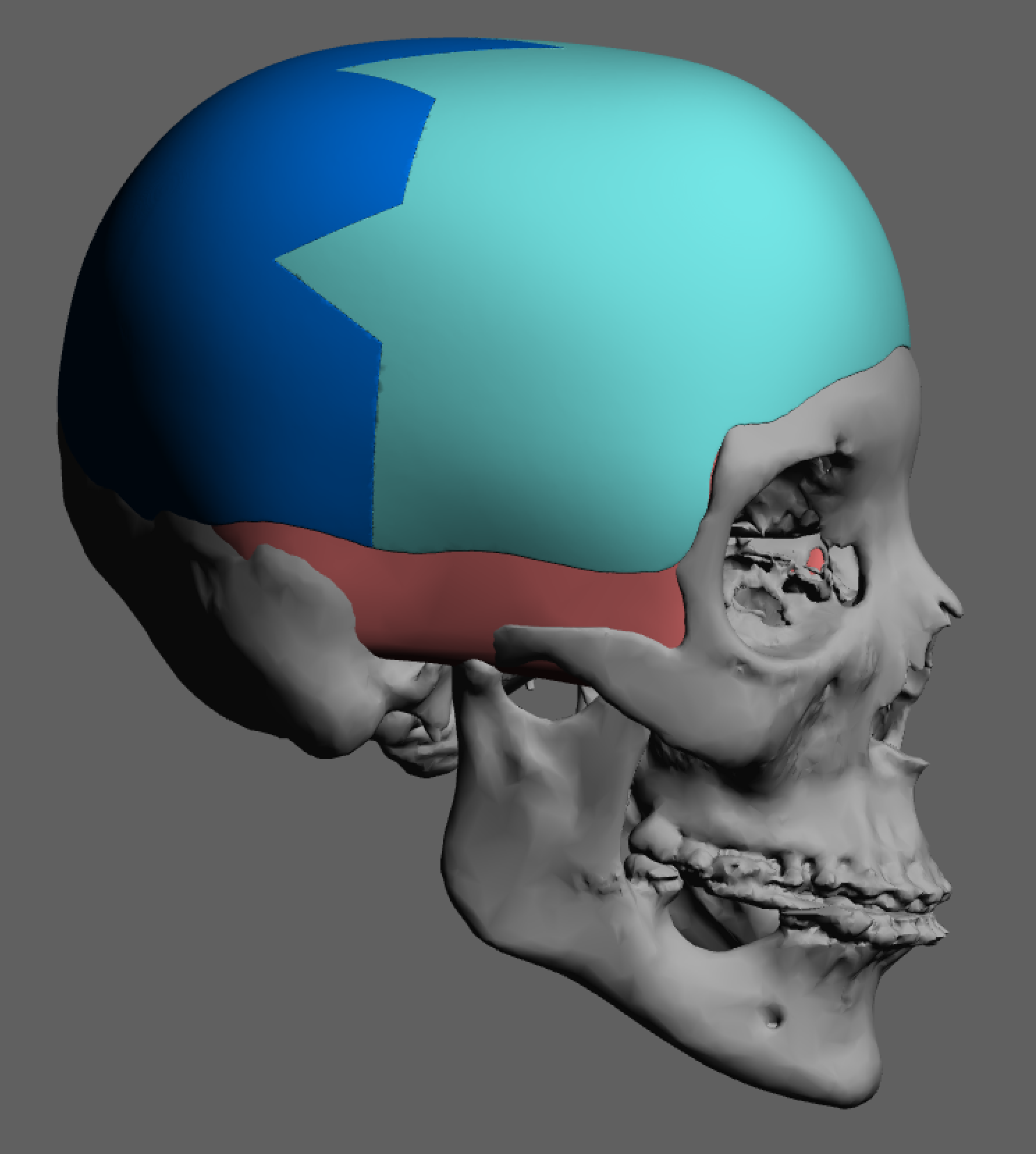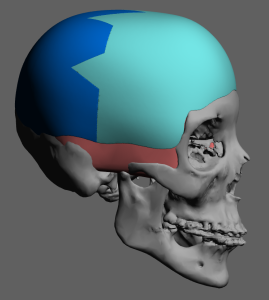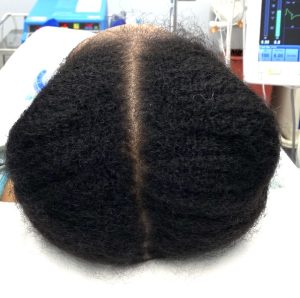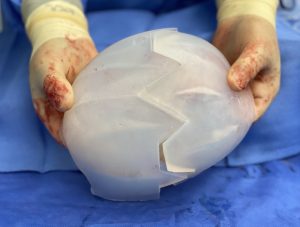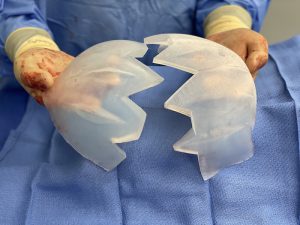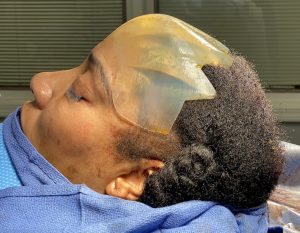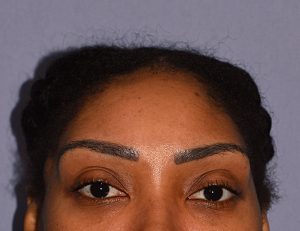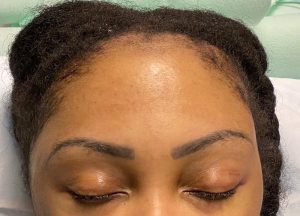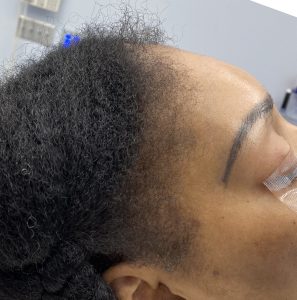Background: Large augmentative skull implants are indicated when there is a congenitally head shape deformity that lacks height as well as width. When these dimensional increases are significant such cases almost always requires a first stage scalp expansion or having had a prior skull implant in place. Despite the relatively large size of the implant it is generally very well tolerated and complications are very few. The extra cranial onlay site is a very privileged implantation area due to the superb blood supply of the scalp and its low infectivity risks.
Despite the favorable features of skull augmentation site, whether it be bone or on top of the deep temporal fascia, the operation must still be performed in an aesthetic fashion. This means that the scalp incision to place it must not be an aesthetic distraction in length or location and the implant must be able to be passed through it for placement. There is also the need to be able to properly position the implant as per the preoperative design to achieve a symmetric result.
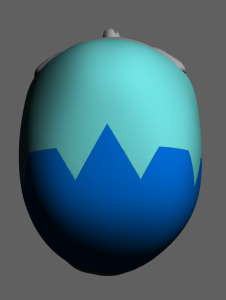
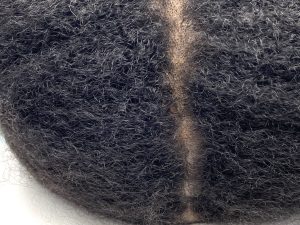


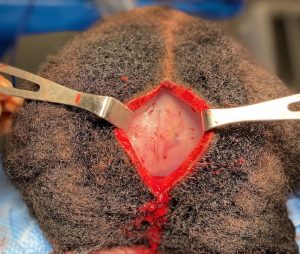
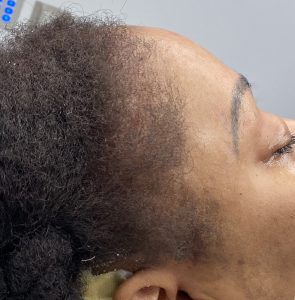
Major head reshaping requires an augmentation that sits on bone as well as the soft tissue on the sides of the head. The skull implant and the material in which it is composed must be capable of covering that large skull surface area as well as able to be inserted and positioned through an acceptable scalp incisional length. The implant design mist also plan for a volume in which the scalp can comfortably close over it. Even with an implant volume over 300ccs all of these criteria can be met with the use a split design that is reassembled once inside the patient.
Case Highlights:
1) Large custom skull implants essentially augment all five head surfaces to some degree.
2) If the scalp has been adequately expanded, skull implant volumes over 300ccs can be safely accommodated.
3) A sagittally oriented scalp incision can be used for placement which has some advantages for anterior posterior pocket dissection.
4) Regardless of the incision type insertion is most effectively done using a split or two piece skull implant design.
Dr. Barry Eppley
Indianapolis, Indiana

